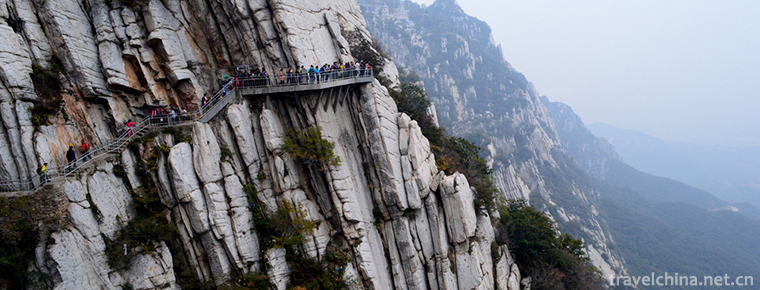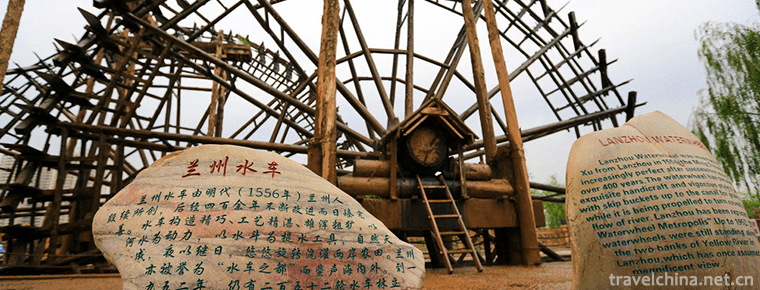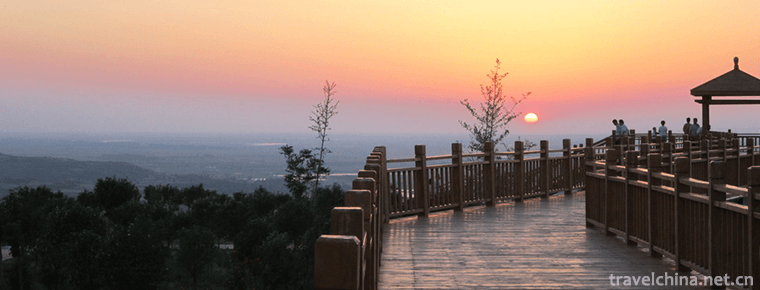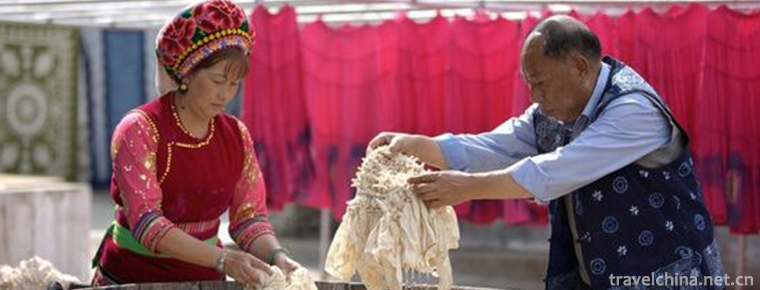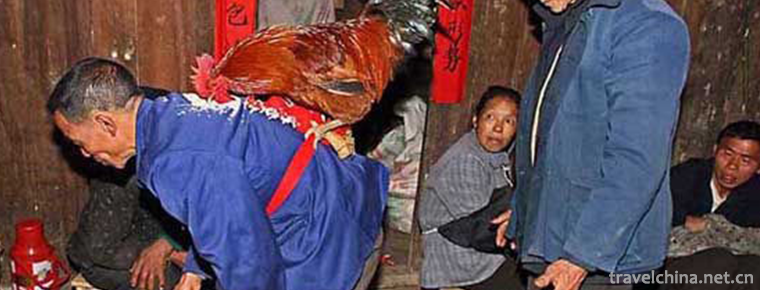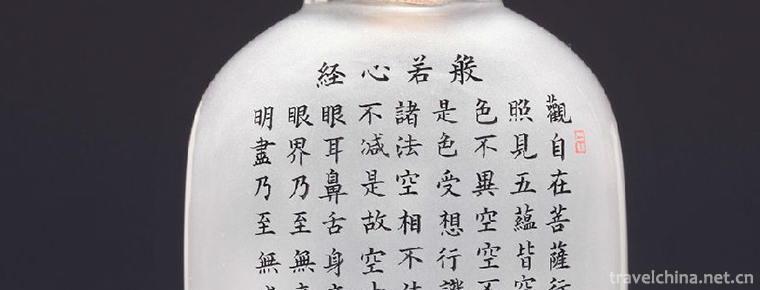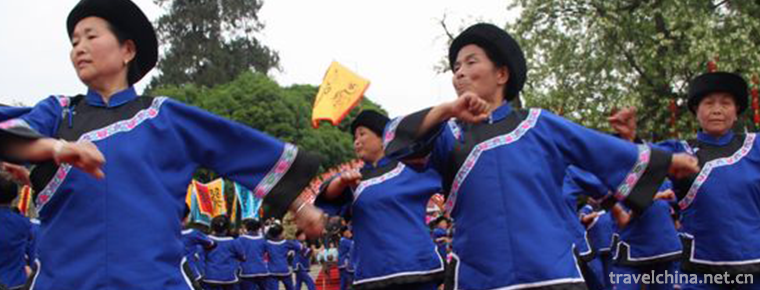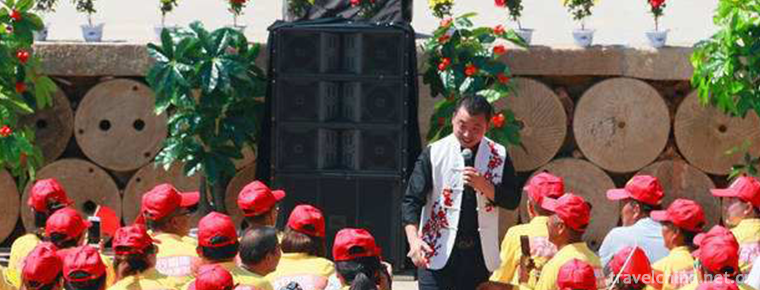Bigan Temple
Bigan Temple, located in Weihui, Henan Province, is one of the most important temple-tomb complex. It is the first temple in China with tomb-worshippers, known as "the first temple in the world". The magnificent temples, magnificent buildings and magnificent simplicity show the wisdom and artistic creativity of the working people of the Han nationality in ancient China. Bigan Temple is a key cultural relic protection unit at the national level. Bigan Tomb is the first recorded mound type tomb in China, which has important historical value.
brief introduction
Bigan Temple is located in Weihui City, a county-level city under Xinxiang City, Henan Province.
Bigan is a loyal minister who admonishes the monarch with death in Chinese history. He is called "the first benevolence in the world". King Wu of Zhou appointed Bigan as the national god. Emperor Xiaowen of the Northern Wei Dynasty built a temple in memory of his loyalty.
The Bigan Temple was maintained by the government in the ancient city of Weihui in all dynasties.
The existing buildings were rebuilt for 7 years in Hongzhi of Ming Dynasty. Bigan Temple is an important building group of temples and tombs. It is the first ancestral temple in China, which contains tombs and sacrifices to people. It is called "the first temple in the world". The temple is magnificent and magnificent.
The main building of the whole temple is composed of Shinto, Zhaobi, Shanmen, Ermen, Stele Gallery, Wood Workshop, Paidian, Hall and so on. The total building area is 47,000 square meters.
There are many cultural relics and historic sites of great value in the temple, whose calligraphy, sculpture and architectural style have high taste and historical value.
Bigan Temple is a state-level key cultural relic protection unit promulgated by the State Council in 1996. Now it has become a tourist scenic spot integrating tombs, temples and precious historical relics. Bigan Tomb is the first recorded mound-type tomb in China. With its long history, complete layout, large scale and rich cultural accumulation, it occupies an important historical position and is called "the first tomb in the world".
There are 64 monuments in Bigan Temple, covering almost all dynasties in China's history, from the inscriptions of Confucius sword in the Spring and Autumn Period to the imperial monuments of Qianlong in the Qing Dynasty.
Confucius'sword inscription of "Yin Bigan Tomb" is the only authentic work of Confucius found so far. It is known as "the first monument in the world". The "Emperor Hang Yin Bigan Tomb" by Emperor Xiaowen of the Northern Wei Dynasty has been handed down as Cui Hao, a famous calligrapher of the Northern and Southern Dynasties, and is the top quality of the Wei Stele.
Emperor Qianlong's Imperial Book of the Qing Dynasty, The Impression of the Tomb of Taishi in the Past Yin Dynasty, is a regular script with stringent and graceful rhyme, magnificent and dignified style of emperor. The fourth stone stele on the left side of the gallery is written by Liu Xilong in the Qing Dynasty with four characters of "three generations of solitary loyalty". It is magnificent and dignified.
Among the top-quality inscriptions are Taizong's Bigan Imperial edict of Fengyin Taishi, Bigan Wen of offering sacrifices to Yin Taishi, and Liu Minzhong's Tombstone of Amnesty Bigan in Yuan Dynasty. These are world-renowned monuments and rich treasures of ancient Chinese calligraphy art. The characteristic plants in the temple, Kaixinbai, Banbai and no cabbage, form a peculiar natural landscape.
Related Legends
Version 1
"Cabbage" is the most famous legend of Bigan Temple. It is said that the loyal soul touched the heavens after Bigan's death. The Jade Emperor sent Jiang Ziya to rescue him. Bigan kept silent, rode South and reached Xinxiang, where he grew a new heart. He hid his robe silently and looked like earth. He drove south. Unexpectedly, when he went to the pasture, he met an old woman who had become Da and stopped to sell hollow cabbage.
Bigan asked, "How about people who don't have the heart to work when they don't have the heart to cook?" The old lady answered, "The dishes have no heart to live, the people have no heart to die." After listening, Bigan vomited blood and fell dead. The loyal soul turns into a thousand-year-old blue, and the red orifice seems to leave a cloud.
Up to now, there are still clumps of hollow cabbage growing on the tomb and in the fields around the temple. Hollow cabbage, three leaves, no heart, people think that dried Qiqiao Danxin into. The passing of history erases people's memory of ancient historical facts, and gradually evolves into this mysterious legend, in order to place the reverence and mourning of Bigan.
Version two
As the brother of Emperor B of Shang Dynasty, Bigan was appointed minister. Emperor B died of illness and Emperor Yi succeeded to the throne. With the help of phase, the Yin and Shang Dynasty became more and more prosperous. However, King Yi indulged in wine and lustre, used treacherous ministers and neglected loyalty, and the Yin and Shang Dynasty quickly embarked on the path of decadence.
As a result, "when the micronuts go away, the rake is slave to them, and he dies by admonishing them." Legend has it that when Bigan died, he was dug up by the King of Qi and picked up the Star Platform with blood stain. In order to commemorate Bigan's loyalty, the Star-Picking Platform of the Yindu Dynasty Song was replaced by the Heart-Picking Platform, on which a stone square was built, and three simple and vigorous "Zhongliefang" was written. On the middle pillar, a solemn couplet was engraved: "The bravery of loyalty and benevolence of Gang Zhizhi is also cruel and tragic!" It's the best compliment for comparison.
It is said that after Bigan's heart was dissected, he traveled 70 miles southward and could change his mind in Xindi, but he could not talk with others on the way.
Halfway down the road, Bigan saw an old woman watering the vegetable garden. The vegetables were careless. He asked, "Can this cabbage live without any intention?" The old woman said ruthlessly, "People don't want to die, but they still have to live, let alone this dish?" The seven orifices of Bigan Qi bleed and fell to the ground immediately. Instantly, the sky was angry, the wind was strong, the sand was flying and the stones covered Bigan's corpse, forming a sand dune, which is the Bigan tomb buried by heaven. After King Wu of Zhou destroyed the Shang Dynasty, he led his ministers to this feudal sacrifice. He was a loyal minister, and inscribed his epitaph to express his admiration.
After King Wu's death, Mrs. Bigan and her son were found in the forest of Taihang Mountains. When they took refuge, they depended on the fruits of the forest for food to survive. So King Wu gave Lin his surname and named him Lin Mugong. It also has the world Lin surname from Bigan said. The Bigan Temple also has donations from Lins'associations around the world. Now, every spring, the descendants of Lin will have representatives here to worship their ancestors.
Scenic spot distribution
Overview
According to the resource situation and development basis of the scenic area, the development layout of the tourist area is described as follows: "One Center, Two Rings and Five Functional Areas". With Bigan Temple as the core and expanding outward, it can be divided into two rings: cultural display ring and ecological garden ring. On this basis, Weihui Bigan Forest Park Tourist Area is divided into five functional areas, namely temple area, cultural exhibition area, Linshi Memorial area, ecological garden area and commercial service area, with a total area of about 791,000 square meters, of which the expanded tourist area is about 744,000 square meters.
In 2011, it was listed as national AAAA scenic spot.
Temple area
It is the core scenic spot of Bigan Forest Garden Tourist Area of Guoshen, and also a national key cultural relic area. The main landscapes include wall, stele gallery, hollow door lion, hall, Kaibai, Xiaowendi Stele of Northern Wei Dynasty, imperial monument of Qianlong Emperor of Qing Dynasty, Confucius sword stele, cemetery, etc. The built area covers an area of 47,000 square meters (in addition, the key protected areas expand 100 meters in four directions, respectively, and the area is used as an ecosystem. Landscape construction.)
Cultural exhibition area
Including the key protected areas of the temple area extending 200 meters southward and 353 meters East-West width, as well as the Bigan Square (radius is 63 meters, area is 124.63 million square meters), Yin Shang Fun Park (area is 25.7 million square meters), Theatre building (area is 400 square meters), celebrity stele forest, etc., with a total area of about 109,000 square meters. The main landscape planning of this scenic spot are: Sanren Temple, Biqian Trail Hall, Yin Shang History and Culture Hall, Zhongjiantang Hall, Cultural and Financial Temple, Bigan Square, Yin Shang Fun Park, Theatre Building, etc.
Eco-garden Area
Beyond the temple area, it expands 200 meters to the East and 300 meters to the south, 200 meters to the north, and the control line to the Beijing-Guangzhou Railway to the west, thus forming an ecological garden area. The main landscape planning of this scenic spot are: Rihu, Yuehu, Guoshenqiao, Guoshenshan, Bamboo Garden, Plum Garden, Pine Forest, Ginkgo Gallery, Orchard, Ecological Flower Nursery, Danxinting and so on, with an area of about 525,000 square meters (including the key protected area of temple area), which is another core scenic spot of Bigan Forest Park.
Lin's Memorial Area
Located outside the temple area and in the northeast of the ecological garden area, it is hidden in dense forests with an area of 50,000 square meters. Its main function is to commemorate Lin's related figures and deeds. The main landscapes of this scenic spot are: Lin's Hall of Fame, Lin's Genealogy Wall, Liulan Hall, Lin's Celebrity Statue Area, Lin's Hall of Family (Lin's Hall of America, Lin's Hall of Thailand, Lin's Hall of Indonesia, Singapore Hall, Lin's Hall of Guangdong, Lin's Hall of Hainan, Lin's Hall of Fujian, Lin's Hall of Taiwan, etc.), Gongde Stele Forest, and the overall architectural style of the scenic spot is Ming and Qing
Business Service Area
In the southern part of the ecological garden area, the eastern side of Bigan Avenue covers an area of 60,000 square meters. Its main function is to provide high-quality, comprehensive business services to tourists. The main landscapes are the ecological parking lot, the farmhouse entertainment service point (that is, the newly built "National Temple Village"), the tea house, the Bigan Avenue and the surrounding high-efficiency ecological agricultural park.
Tourism information
1. The opening time of scenic spots is 8:00-19:00 in summer and 8:30-17:30 in winter.
2. Ticket Collection Place: Ticket Office of Scenic Spot
3. Reservation criteria for special population:
A. Free Policy: No tickets for children under 1.2 meters; No tickets for active servicemen with officer's certificates; No tickets for people over 70 years old; No tickets for guests surnamed Lin with identity cards
B. Preferential Policy: Students buy preferential tickets with student certificates, and the elderly over 60 years old buy preferential tickets with senile certificates.
Bigan is the grandfather of the Lins in the world. Weihui Bigan Temple is the root of Lin's family in the world. Since 1993, the Weihui Municipal Committee and the Municipal Government have held annual Bigan Birthday Memorial Meeting. The children of Lin family have come to pay homage to their ancestors. The Bigan Temple has become a sacred place for Bigan descendants at home and abroad to pay homage to their ancestors.
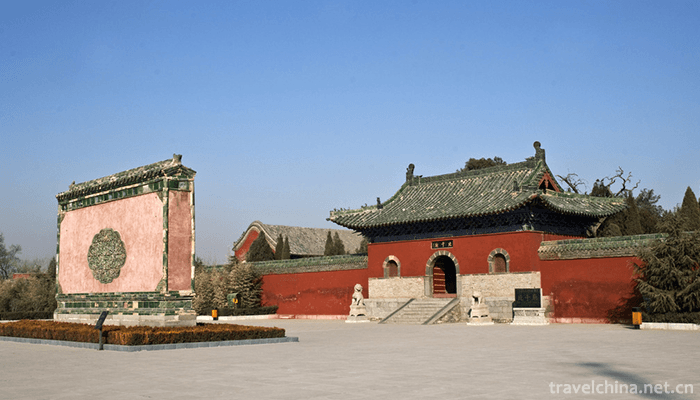
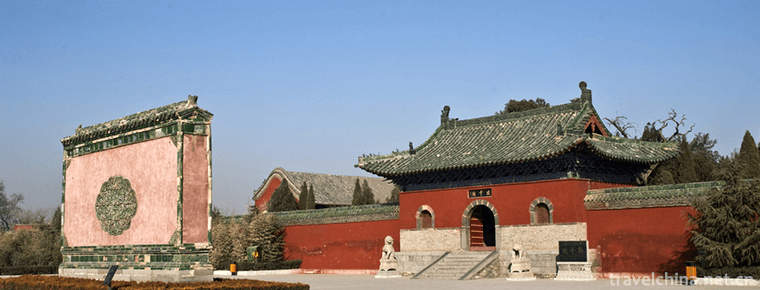
Bigan Temple
-
Mount Song
Songshan, known as the "foreign side" in ancient times, Xia and Shang Dynasties as "lofty" and "Chongshan", Western Zhou Dynasty as "Yue Shan", Songshan as the
Views: 232 Time 2018-10-30 -
Waterwheel Garden
On August 26, 2005, Lanzhou, known as the "Water Vehicle Capital", built a Water Vehicle Expo Park, which reproduced the spectacular scene of water vehicles on both sides of the Yellow River
Views: 237 Time 2019-02-08 -
Tangjiahe Scenic Area
Tangjiahe Scenic Area is located in Qingchuan County, Guangyuan City, Sichuan Province. Subtropical monsoon climate. National AAAA-level tourist attractions. Established in 1978, it covers a total are
Views: 279 Time 2019-02-13 -
Tongguan Yellow River Scenic Area
Tongguan Yellow River Scenic Spot is located at the famous ancient military pass-Tongguan ancient city, 140 kilometers away from Xi'an, only 20 kilometers away from Huashan
Views: 110 Time 2019-02-22 -
Bai nationality tiedyeing skills
Bai tie-dyeing technology, the local traditional textile dyeing technology in Dali City, Yunnan Province, is one of the national intangible cultural heritage.
Views: 247 Time 2019-04-03 -
Hit City drama
Dacheng Opera, a local traditional drama in Quanzhou City, Fujian Province, is one of the national intangible cultural heritage.
Views: 217 Time 2019-04-22 -
Circus
Circus is one of the acrobatics. Originally, it refers to the performance performed by people on horses. Now it is a general term for the performance of various wild animals and domesticated birds. It
Views: 143 Time 2019-05-16 -
Maonan Fat Cover
"Fat set" is the general name of Maonan people's vow-making activities. It prevailed in the Ming and Qing Dynasties. At the beginning, Maonan people used Nuo rituals to sacrifice the heavens
Views: 106 Time 2019-05-27 -
a bottle with painted designs
Internal painting is a unique traditional craft in China. It originated from snuff bottle painting. The interior painting method is a special deformed fine brush, in glass/crystal, amber and other mat
Views: 150 Time 2019-06-07 -
Tujia Waving Dance
Hand-waving dance is an ancient traditional dance of Tujia nationality. It mainly spreads in the Youshui River and Wujiang River basin at the junction of Hubei, Hunan, Chongqing and Guizhou. It mainly
Views: 125 Time 2019-06-23 -
Left power blossoms
The style of Zuoquan folk songs began to take shape in Sui Dynasty. In 1930s, Zuoquan flowering tune was derived from Zuoquan folk songs. Zuo Quan's blooming tunes are exquisite in conception, novel i
Views: 394 Time 2019-08-16 -
wolong national nature reserve
Wolong Nature Reserve is located in the southwest of Wenchuan County, Aba Tibetan and Qiang Autonomous Prefecture, Sichuan Province, on the southeast slope of Qionglai mountains, 130 kilometers away from Chengdu
Views: 271 Time 2020-11-06
